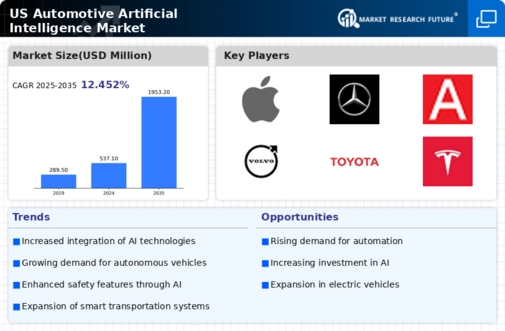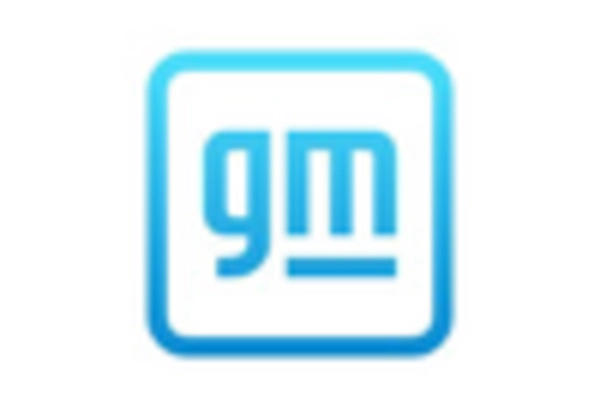Regulatory Support for AI Integration
The automotive artificial-intelligence market is benefiting from increasing regulatory support aimed at promoting the integration of AI technologies in vehicles. Government initiatives are encouraging the development of advanced driver assistance systems and autonomous driving capabilities. For instance, the National Highway Traffic Safety Administration (NHTSA) has established guidelines that facilitate the testing and deployment of AI-driven vehicles. This regulatory framework not only enhances safety standards but also fosters innovation within the industry. As a result, automotive manufacturers are more inclined to invest in AI technologies, anticipating that regulatory support will create a favorable environment for the growth of the automotive artificial-intelligence market. The alignment of industry goals with regulatory objectives is expected to accelerate the adoption of AI solutions in vehicles.
Investment in Research and Development
The automotive artificial-intelligence market is experiencing a notable increase in investment in research and development (R&D) activities. Companies are allocating substantial resources to explore innovative AI applications that can enhance vehicle performance and user experience. This trend is underscored by the fact that R&D spending in the automotive sector is expected to exceed $100 billion annually by 2025. Such investments are aimed at developing cutting-edge technologies, including AI-driven infotainment systems, predictive analytics, and autonomous driving capabilities. The focus on R&D is likely to foster collaboration between automotive manufacturers and technology firms, further propelling advancements in the automotive artificial-intelligence market. As a result, the industry is poised for transformative growth, driven by continuous innovation and technological breakthroughs.
Advancements in Machine Learning Algorithms
The automotive artificial-intelligence market is witnessing rapid advancements in machine learning algorithms, which are crucial for enhancing vehicle intelligence. These algorithms enable vehicles to learn from vast amounts of data, improving their ability to make real-time decisions. The market is projected to grow at a CAGR of around 20% over the next five years, driven by the increasing complexity of driving environments and the need for more sophisticated AI systems. Automotive manufacturers are leveraging these advancements to develop features such as predictive maintenance, adaptive cruise control, and enhanced safety systems. As machine learning continues to evolve, it is likely to play a pivotal role in shaping the future of the automotive artificial-intelligence market, enabling vehicles to operate more autonomously and efficiently.
Growing Demand for Smart Mobility Solutions
There is a surge in demand for smart mobility solutions. As urbanization increases, consumers are seeking innovative transportation options that enhance convenience and efficiency. This trend is reflected in the projected growth of the market, which is expected to reach approximately $60 billion by 2026. The integration of AI technologies in vehicles facilitates real-time traffic management, route optimization, and personalized user experiences. Consequently, automotive manufacturers are investing heavily in AI-driven systems to meet consumer expectations and improve overall vehicle performance. This growing demand for smart mobility solutions is likely to drive advancements in the automotive artificial-intelligence market, as companies strive to develop cutting-edge technologies that cater to the evolving needs of consumers.
Consumer Preference for Enhanced Safety Features
Consumer preferences for enhanced safety features in vehicles significantly influence the market. As awareness of road safety increases, consumers are actively seeking vehicles equipped with advanced safety technologies powered by AI. This trend is evident in the growing sales of vehicles featuring AI-driven safety systems, which are projected to account for over 40% of total vehicle sales by 2027. Automotive manufacturers are responding to this demand by integrating AI technologies that provide features such as collision avoidance, lane-keeping assistance, and emergency braking. The emphasis on safety is likely to propel the automotive artificial-intelligence market forward, as manufacturers strive to meet consumer expectations and regulatory requirements for safer driving experiences.

















Leave a Comment